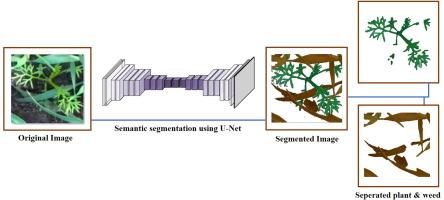A deep semantic segmentation-based algorithm to segment crops and weeds in agronomic color images
Abstract
In precision agriculture, the accurate segmentation of crops and weeds in agronomic images has always been the center of attention. Many methods have been proposed but still the clean and sharp segmentation of crops and weeds is a challenging issue for the images with a high presence of weeds. This work proposes a segmentation method based on the combination of semantic segmentation and K-means algorithms for the segmentation of crops and weeds in color images. Agronomic images of two different databases were used for the segmentation algorithms. Using the thresholding technique, everything except plants was removed from the images. Afterward, semantic segmentation was applied using U-net followed by the segmentation of crops and weeds using the K-means subtractive algorithm. The comparison of segmentation performance was made for the proposed method and K-Means clustering and superpixels algorithms. The proposed algorithm provided more accurate segmentation in comparison to other methods with the maximum accuracy of equivalent to 99.19%. Based on the confusion matrix, the true-positive and true-negative values were 0.995 2 and 0.898 5 representing the true classification rate of crops and weeds, respectively. The results indicated that the proposed method successfully provided accurate and convincing results for the segmentation of crops and weeds in the images with a complex presence of weeds.


 求助内容:
求助内容: 应助结果提醒方式:
应助结果提醒方式:


